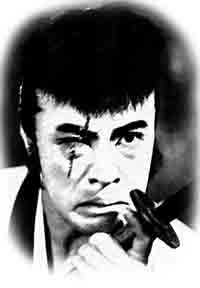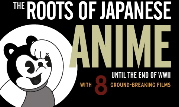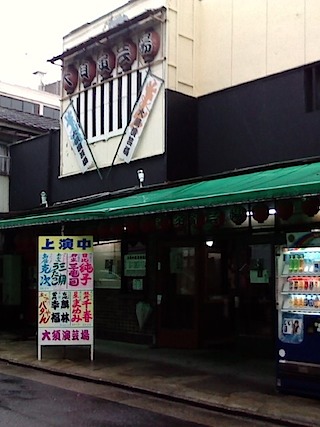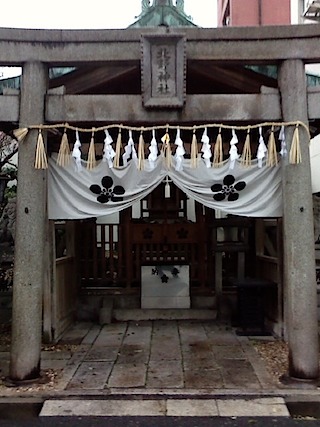I often get mail from students who are hoping to study film in Japan (I have an old, somewhat out-of-date post about studying Japanese film in North America). There are a variety of opportunities, but they can be divided according to whether you want to do film studies or filmmaking.
Film Studies:
One of the sad facts about Japanese film culture is that Japan does not value that culture much. There is little government support for film culture and education (except when it can immediately turn a profit or build some box as a payoff to construction industry friends), and universities have long ignored film studies as a discipline. The ignorance the average Japanese has of his or her own film culture can be appalling at times. But there have been a few universities that have valiantly pursued film studies and sport excellent scholars. Some have very good libraries (which you can learn more about in our Research Guide to Japanese Film Studies). I definitely recommend that anyone seriously studying Japanese film spend at least a year in Japan partially associated with a university. It is a great way to meet scholars and students, attend some special classes, and gain access to university collections. The value of doing a degree in Japan, however, is debatable. It could possibly help your resume to add a masters from a Japanese institution to a PhD from a North American university, but frankly PhDs in film studies from Japanese universities have a very hard time finding a job in Japan, let alone elsewhere. The job situation may be different outside North America or the English-speaking world, so you should get a lot of advice from knowledgeable academic advisors before taking the plunge. The sad fact, however, is that Japanese institutions as a whole are not highly regarded world-wide. This is unfortunate because there are a number of Japanese scholars who are doing some of the best work on film in the world; ignoring that is often just part of Eurocentrism. Yet the current institutional fact is North American institutions are just better funded and managed. It is still advisable to attend a PhD in North American program like the one at Yale, and spend a year or two in Japan as part of the program.
That said, the best graduate programs in film studies in Japan tend to be the following in alphabetical order:
Kyoto University (Human and Environmental Studies): Has produced some great scholars, but the current faculty is problematic, so I don't recommend this strongly.
Meiji Gakuin University (Geijutsugaku): I used to teach here, with colleagues such as Yomota Inuhiko, Saito Ayako, and Monma Takashi. It has a lot of ryugakusei and kenkyusei from abroad.
Nagoya University: Peter B. High helped build this up and Fujiki Hideaki is maintaining it well.
Nihon University: On old program which has tended to lean towards production more than film studies, but still has some very good scholars.
Rikkyo University: A newer program featuring strong faculty like Nakamura Hideyuki.
Tokyo University: Hyosho was best when Hasumi Shigehiko was around, but it now does not have anyone totally dedicated to film.
Waseda University: The most solid of the programs. The Engeki Eizo course features Takeda Kiyoshi, Komatsu Hiroshi, and Fujii Jinshi. Other great people interested in film, such as Hase Masato and Toeda Hirokazu, can be found elsewhere on campus. Of course the Engeki Hakubutsukan is heaven on earth for the film researcher.
Filmmaking:
First, I should note that studying filmmaking in Japan is rather unrealistic. Some people have the illusion that they can somehow get into Japanese film culture or the Japanese film industry by studying filmmaking in Japan, or start making their own ninja movies if they come here. But the fact is that most filmmaking programs in Japan are undergraduate, and thus you have to be committed to studying for four years in courses all held in Japanese - if you can get through exam hell first. There is only one real grad program and it is very hard to get into. Also, I should note that going to a film school in Japan will not guarantee you entry into the Japanese film industry. Television studios are now the major producers of film in Japan and they get their talent from the four-year colleges, and not necessarily film departments. Connections (kone) are still one of the best ways to get into filmmaking in Japan, and non-Japanese don't have them. (Some write to me asking for help getting internships on the set, but I'm afraid those are hard for even me to get.)
With that proviso, here are some of those undergrad programs:
Kyoto Zokei Geijutsu Daigaku: Instructors include Hayashi Kaizo and Ito Takashi. Musashino Bijutsu Daigaku: Strong in experimental film with teachers like Kurosawa Keita, etc.
Nihon University (Geijutsu Gakubu): One of the oldest programs with grads such as Ishii Sogo.
Osakai Geijutsu Daigaku: This has produced recent filmmakers like Yamashita Nobuhiro, Kumakiri Kazuyoshi, and Hashiguchi Ryosuke.
Rikkyo University (Gendai Shinri Gakubu): An odd place to put filmmaking, but Shinozaki Makoto and Manda Kunitoshi are professors there.
Ritsumeikan University (Eizo Gakubu): A new program that has links to Shochiku.
Tama Bijutsu Daigaku: Especially strong in experimental film with instructors like Hagiwara Sakumi, Hoshino Akira, etc.
Tokyo Zokei Daigaku: The current university president is the director Suwa Nobuhiro.
This is the sole dedicated graduate program:
Tokyo University of the Arts: The only masters program in filmmaking at a national university. The professors there are Kurosawa Kiyoshi and Kitano Takeshi.
Then there are a number of private film academies, three of which are worth noting. Don't expect scholarships from these institutions. The first and the last are just continuing education institutions and thus wholly depend on tuition and probably can't help you get a visa:
The Film School of Tokyo: Instructors there include Aoyama Shinji, Shiota Akihiko, Zeze Takahisa, etc.
Japan Academy of Moving Images: Founded by Imamura Shohei and featuring graduates like Miike Takashi, this three-year academy is planning to become a four-year college in 2011.
Image Forum Eizo Kenkyujo: Focuses on experimental film, but has graduates like Mochizuku Rokuro.
films, creating a unique world mixing the imaginary and the real, foregrounding style and color. That in some ways culminated in his work on Seijun's Tokyo Drifter
(1966).
(1980), but other well known films include Itami Juzo's Tampopo
(1985). He won a prize at the 1990 Montreal Film Festival for his work on Shikibu monogatari. As a footnote, Kimura was one of the eight people (including Sone Chusei, Yamatoya Atsushi, etc.) who participated in the scriptwriting for Seijun's films at Nikkatsu under the name Guru Hachiro.




